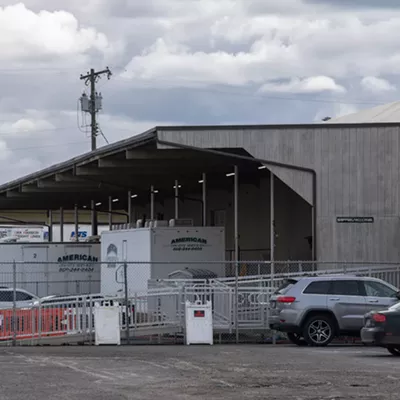When I was growing up in the Boston area during the '60s and '70s, FM radio emerged as the voice for those who lived outside the mainstream. Classical music ruled a couple of spots on the dial, but in places like Spokane, the legendary KREM-FM lurked the dark and dangerous mysteries of the counterculture -- underground stations and rebel DJs who praised the unholy trinity of sex, drugs and rock 'n' roll.
Rock could be found on the AM dial then, too, of course. Here in Spokane, people recall KJRB fondly. But the most progressive voices -- those protesting the war in Vietnam, speaking out for civil rights or just basking in the hedonism of the day -- wound up on FM.
In Boston, the coolest, hippest station then was WBCN-FM. Born as a classical outlet, in 1968 the station began to lease time at night for "underground" rock broadcasts. Within a year 'BCN played strictly rock. But the music wasn't the only draw; early personalities -- including Peter Wolf, later of J. Geils Band fame; a DJ named Oedipus; and an astrologer who called himself the Cosmic Muffin -- captured the wild edginess of the '60s counterculture. The station's news reports leaned provocatively to the left, while music programmers defied prevailing wisdom and played entire album sides without interruption.
Since then, FM radio has changed in Boston, Spokane and all across the country. Following passage of the Telecommunications Act of 1996 and its erosion of the previous ownership limits, a handful of media giants have consolidated a virtual oligopoly of radio. WBCN has been bought and sold many times; current owner Infinity Broadcasting holds about 185 stations in 40 U.S. markets and is a subsidiary of Viacom. Longtime on-air personalities and off-the-cuff programming are gone, replaced by Howard Stern, New England Patriots football and occasional periods of music in the "modern rock" format.
Rather than being the place to go for alternative views and diverse music, commercial FM radio is just one more standardized commodity in our corporate culture now, say many media critics. Distant owners and executives determine much of the content, and dissent from a status quo perspective is not condoned -- just ask the Dixie Chicks. Even the titillating banter of drive-time teams and shock-jocks like Howard Stern constitute nothing more than what media scholar Clay Calvert calls "mediated voyeurism."
In some markets, activists protesting media consolidation support "pirate" radio stations, those that operate low-power, often mobile transmitters that are not licensed by the FCC. Others hold out hope for low-power FM (LPFM) community radio, established by the FCC in 1999 for nonprofit, non-commercial stations broadcasting at 100 watts or less. Locally, Thin Air Radio and its parent organization, Citizens for Clean Air, have now received their LPFM permit from the FCC to begin broadcasting at 95.3 with the call letters KYRS and a target on-air date of October 27, 2003. Just this week, Thin Air Radio received a $4,000 grant from A Territory Resource, a foundation based in Seattle. Coordinator Lupito Flores says the program committee has received more than 100 proposals for music and public affairs shows from across the community.
"We've had proposals for eclectic music shows -- hip-hop, electronica, jazz, Latino," he says. Diverse groups such as the Russian refugee community and the local Hmong association have proposed shows, he says, along with groups offering discussions about labor and the environment. A few syndicated progressive news programs will find their way onto the schedule, but Flores adds, "We'll be at least 75 percent locally produced."
Low-power FM stations may be new, but community radio has been around for decades. In addition to the system of public radio stations like KPBX, which are partially funded by the Corporation for Public Broadcasting, many communities around the country support full-power stations that are nonprofit, non-commercial, and locally focused. Flores cites KBOO in Portland, Ore., as one model for the Thin Air planning team; KAOS from Evergreen College in Olympia is another station mentioned by community radio advocates. Cities from Berkeley, Calif. -- the founding home of Pacifica Radio -- to tiny Blue Hill, Maine, host full-power community-supported stations.
Despite Thin Air's low power signal, Flores expects KYRS to reach most South Hill and North Side neighborhoods, although reception may be shaky in the lower elevations near downtown, he says.
While acknowledging concerns that LPFM might divert the attention and energy of media reform activists who would otherwise oppose consolidation of corporate media ownership, Flores feels that Thin Air will be a worthwhile addition to Spokane's airwaves. "For Spokane, this is pretty unique. It will give a lot of people a voice in a community where they now have none."
Publication date: 05/15/03















